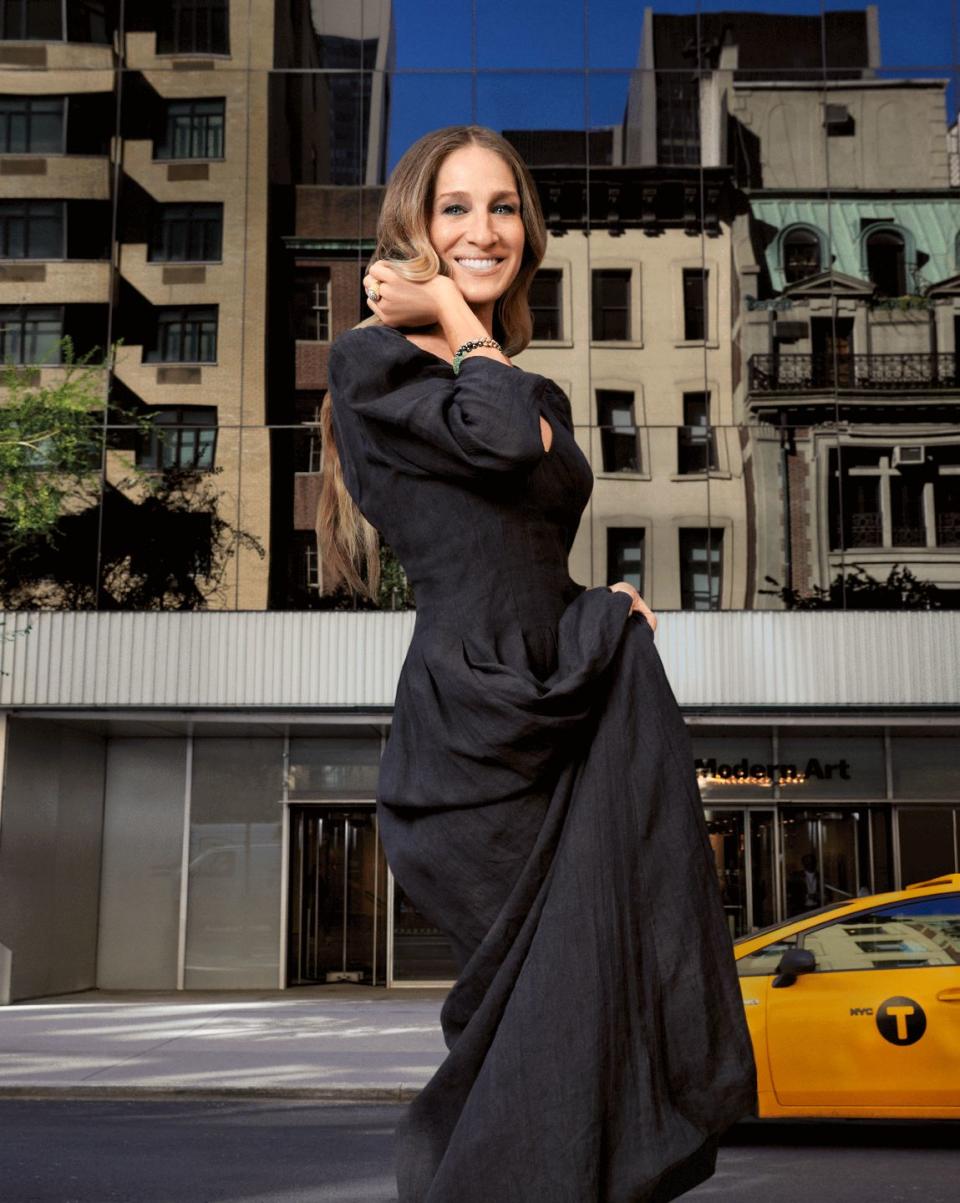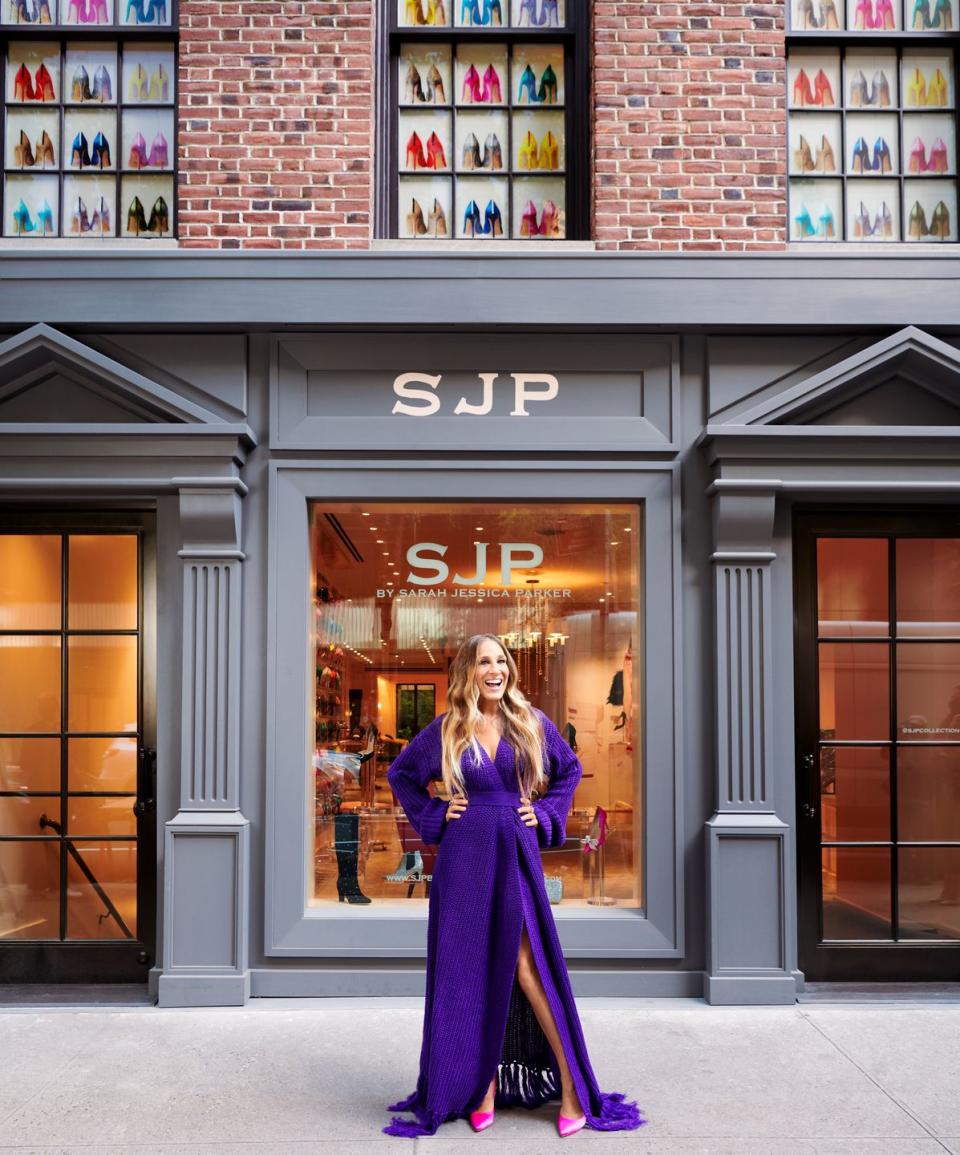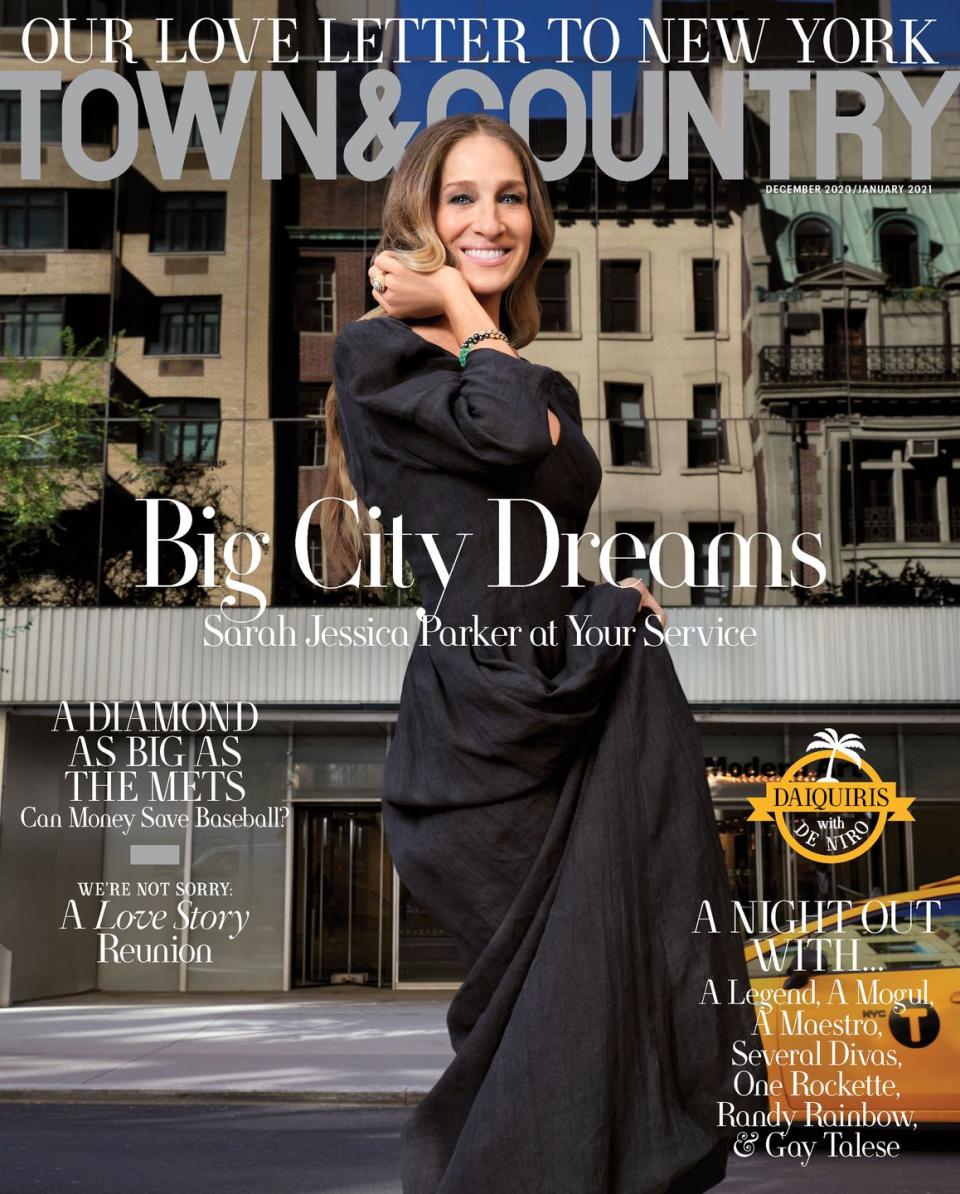Sarah Jessica Parker Wants a Word With The People Who Fled New York


“In my estimation,” says Sarah Jessica Parker, “there is no greater city than New York City.” The actress turned fashion mogul turned civic activist finds joy lately in working the sales floor at her new SJP flagship shoe boutique, which opened this July on West 54th Street, sometimes even delivering orders to customers’ doorsteps on her way home. She expounded on her love for New York in a recent Zoom interview. It all began in 1976, when she debuted on Broadway at the age of 11 and then moved to the city from Cincinnati with her family. Decades later she became a household name and fashion icon—and perhaps the most famous archetypal starry-eyed New Yorker—on HBO’s Sex and the City. Her bona fides now include vice chairman of the New York City Ballet and member of the Partnership for New York City, a nonprofit economic council of the city’s CEOs. Next year she will return to Broadway to star opposite her husband Matthew Broderick in the revival of the Neil Simon comedy Plaza Suite. In the meantime she’ll be right over with your size.
New York governor Andrew Cuomo calls our city “New York tough.” What does it mean to you to be a New Yorker?
I think it has to do with the cultural promise and complexity of New York City—the challenges and the opportunities, the vibrancy. I love the yellow taxis, I love the architecture… It’s a place that, even today, when I walk out the door, I don’t know what will happen. I’m not in a car; I’m not behind a gate. I’m forced to be on the streets and bump into people and connect with humanity. I think my children are enormously lucky to be raised in New York City.
What do you think of the exodus of city residents that the pandemic has spurred?
After Labor Day is when I started having hard conversations with my friends. People who are wealthy—New Yorkers who made great success for themselves in New York City—I feel that they owe it to the city to reinvest, to come home to make a city that is now unfamiliar familiar again. Your favorite deli and restaurant—those businesses can’t wait for you. They can’t hold on to employees until you come home. They need to feel our presence, to have our financial support to remain open, or reopen. In order for our city to look familiar and to function as you have come to expect, you have to come home.

What do you think of the empty storefronts that reap a tax break by remaining empty?
All those conversations are happening at the Partnership for New York City, which I was invited to join in September. My fantasy for the landlords who own the buildings and can afford to leave them empty: how about if they get more creative with all those small businesses that want to open. There are designers or smaller restaurants with a huge amount of promise. The landlords could offer them low rents, and these landlords could have a stake in these businesses. They could be thoughtful about how they share the profits. Everybody benefits from a neighborhood that’s populated with businesses and not boarded up.
Your career began in the arts, and now you’re in the fashion business, since launching SJP shoes in 2014. You just opened your New York flagship store this summer. How is that going? Are we ever going to dress up again?
We struggled through the lockdown, but we kept all our employees on their health insurance. Our staff is back on staggered schedules. We’ve had great days; we’ve had days that were not so great. To be on the floor with customers is my favorite part of the business. I’m getting shoes for them and learning all about their lives. We do virtual shopping, and for deliveries south of 54th Street, I drop shoes off to the customers myself. I have a strong suspicion that this small, intimate approach is the way retail is going.
And yes, people are still buying heels every day—especially on e-commerce. What we’ve heard from our customers around the country is that people will be entertaining more in their homes, and people are wanting to dress up. What’s our indoor shoe? How do we address a house slipper that is still a party for your foot and doesn’t hit the street and stays special? That’s coming in our next collection.

When do you expect the red carpet parties and black tie galas to return to New York?
I don’t miss the red carpet, but I’m excited for the day when it feels right and good to do glamour again. What’s missing are all those steps in between. I look forward to when we are a functioning society and on the road to a substantive recovery—with job security and no food scarcity issues, when people have what they need and what they deserve.
What did you miss most during the lockdown?
I love walking in the city. I plan my workday around how I’m going to get there on foot. I put my headphones on and I’m in Koreatown, I’m in Chelsea. I missed walking into the pizza place, waiting in line with the construction workers. I missed the Mister Softee trucks.
How can ordinary New Yorkers help restimulate the city?
I’m no expert on city planning, but we lived for hundreds of years without big box stores. We went to our local hardware stores to get Scotch tape and our grocery stores and bodegas to get paper towels and soap. We can’t be lazy and just shop online. Do your best to shop locally, shop locally, shop locally! Especially in shops that are unique to New York.

Photographs by Jason Schmidt
Styled by Anne Christensen
Hair by Josué Perez for Tineco Beauty. Makeup by Gianpaolo Ceciliato for Dior Beauty. Tailoring by Lars Nord at Lars Nord. Production services by Cassandra Tannenbaum. Production security by Reggie Henry for Harry Hill & Associates.
This story appears in the December 2020 / January 2021 issue of Town & Country.
SUBSCRIBE NOW
You Might Also Like


